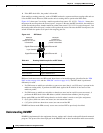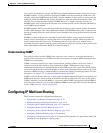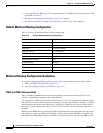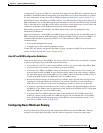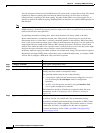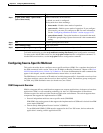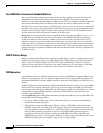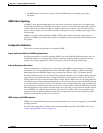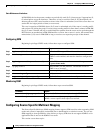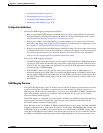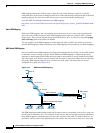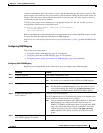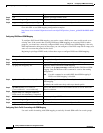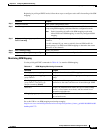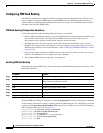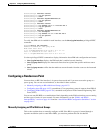
44-16
Catalyst 3560 Switch Software Configuration Guide
OL-8553-06
Chapter 44 Configuring IP Multicast Routing
Configuring IP Multicast Routing
State Maintenance Limitations
In PIM-SSM, the last hop router continues to periodically send (S, G) join messages if appropriate (S,
G) subscriptions are on the interfaces. Therefore, as long as receivers send (S, G) subscriptions, the
shortest path tree (SPT) state from the receivers to the source is maintained, even if the source does not
send traffic for longer periods of time (or even never).
This case is opposite to PIM-SM, where (S, G) state is maintained only if the source is sending traffic
and receivers are joining the group. If a source stops sending traffic for more than 3 minutes in PIM-SM,
the (S, G) state is deleted and only re-established after packets from the source arrive again through the
RPT. Because no mechanism in PIM-SSM notifies a receiver that a source is active, the network must
maintain the (S, G) state in PIM-SSM as long as receivers are requesting receipt of that channel.
Configuring SSM
Beginning in privileged EXEC mode, follow these steps to configure SSM:
Monitoring SSM
Beginning in privileged EXEC mode, follow these steps to monitor SSM.
Configuring Source Specific Multicast Mapping
The Source Specific Multicast (SSM) mapping feature supports SSM transition when supporting SSM
on the end system is impossible or unwanted due to administrative or technical reasons. You can use
SSM mapping to leverage SSM for video delivery to legacy STBs that do not support IGMPv3 or for
applications that do not use the IGMPv3 host stack.
This section covers these topics:
Command Purpose
Step 1
ip pim ssm [default | range access-list] Define the SSM range of IP multicast addresses.
Step 2
interface type number Select an interface that is connected to hosts on which
IGMPv3 can be enabled, and enter the interface configuration
mode.
Step 3
ip pim {sparse-mode | sparse-dense-mode} Enable PIM on an interface. You must use either sparse mode
or sparse-dense mode.
Step 4
ip igmp version 3 Enable IGMPv3 on this interface. The default version of
IGMP is set to Version 2.
Step 5
end Return to privileged EXEC mode.
Step 6
show running-config Verify your entries.
Step 7
copy running-config startup-config (Optional) Save your entries in the configuration file.
Command Purpose
Router# show ip igmp groups detail Display the (S, G) channel subscription through IGMPv3.
Router# show ip mroute Display whether a multicast group supports SSM service or
whether a source-specific host report was received.



